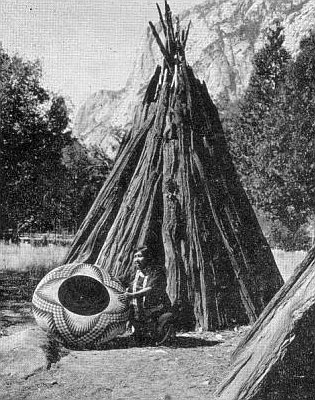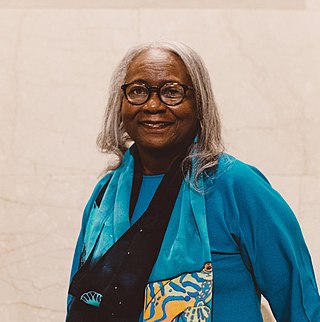Related Research Articles

The Pomo are a Native American people of California. Historical Pomo territory in Northern California was large, bordered by the Pacific Coast to the west, extending inland to Clear Lake, and mainly between Cleone and Duncans Point. One small group, the Tceefoka, lived in the vicinity of present-day Stonyford in Colusa County, separated from the core Pomo area by lands inhabited by Yuki and Wintuan speakers.

The hibachi is a traditional Japanese heating device. It is a brazier which is a round, cylindrical, or box-shaped, open-topped container, made from or lined with a heatproof material and designed to hold burning charcoal. It is believed hibachi date back to the Heian period. It is filled with incombustible ash, and charcoal sits in the center of the ash. To handle the charcoal, a pair of metal chopsticks called hibashi is used, in a way similar to Western fire irons or tongs. Hibachi were used for heating, not for cooking. It heats by radiation, and is too weak to warm a whole room, often disappointing foreigners who expected such power. Sometimes, people placed a tetsubin over the hibachi to boil water for tea. Later, by the 1900s, some cooking was also done over the hibachi.

Basket weaving is the process of weaving or sewing pliable materials into three-dimensional artifacts, such as baskets, mats, mesh bags or even furniture. Craftspeople and artists specialized in making baskets may be known as basket makers and basket weavers. Basket weaving is also a rural craft.

Louisa Keyser, or Dat So La Lee was a celebrated Native American basket weaver. A member of the Washoe people in northwestern Nevada, her basketry came to national prominence during the Arts and Crafts movement and the "basket craze" of the early 20th century. Many museums of art and anthropology preserve and display her baskets, such as the Penn Museum in Philadelphia, the Smithsonian National Museum of the American Indian in Washington, D.C., the Nevada State Museum in Carson City, and the Metropolitan Museum of Art in New York.

Owney, was a terrier mix adopted in the United States as a postal mascot by the Albany, New York, post office about 1888. The Albany mail professionals recommended the dog to their Railway Mail Service colleagues, and he became a nationwide mascot for nine years (1888–1897). He traveled over 140,000 miles throughout the 48 contiguous United States and around the world as a mascot of the Railway Post Office and the United States Postal Service. He was the subject of commemorative activities, including a 2011 U.S. postage stamp.

Ferne Jacobs, who is also known as Ferne K. Jacobs and Ferne Kent Jacobs is an American fiber artist and basket maker.

Ed Rossbach was an American fiber artist.

Snowplow is an abstract outdoor sculpture by American artist Mark di Suvero located on the grounds of the Indianapolis Museum of Art. The sculpture was purchased in 1975 by the Indianapolis Sesquicentennial Commission and first installed in Indianapolis, Indiana in 1977.
Gail Tremblay was an American writer and artist from Washington State. She is known for weaving baskets from film footage that depicts Native American people, such as Western movies and anthropological documentaries. She received a Washington State Governor's Arts and Heritage Award in 2001.

The visual arts of the Indigenous peoples of the Americas encompasses the visual artistic practices of the Indigenous peoples of the Americas from ancient times to the present. These include works from South America and North America, which includes Central America and Greenland. The Siberian Yupiit, who have great cultural overlap with Native Alaskan Yupiit, are also included.

Mavis Doering was a Cherokee Nation basketmaker from Oklahoma.

Kelly Jean Church is a black ash basket maker, Woodlands style painter, birchbark biter, and educator.

Mary Jackson is an African American fiber artist. She is best known for her sweetgrass basket weaving using traditional methods combined with contemporary designs. A native of coastal South Carolina and a descendant of generations of Gullah basket weavers, Jackson was awarded a MacArthur Foundation fellowship in 2008 for "pushing the tradition in stunning new directions." Mary Jackson is a recipient of a 2010 National Heritage Fellowship from the National Endowment for the Arts.
Kay Sekimachi is an American fiber artist and weaver, best known for her three-dimensional woven monofilament hangings as well as her intricate baskets and bowls.

Mary Kawennatakie Adams was a Mohawk First Nations textile artist and basket maker.
Mary Leaf (1925–2004) was an Akwesasne Mohawk basket maker, who lived on the border between Canada and the United States. Leaf specialized in basket making, having learned customary basketry techniques from her mother. Her work can be found in the collections of the Newark Museum and the National Museum of the American Indian.

Cherish Nebeshanze Parrish is a black ash basket maker and birchbark biter. She is a member of the Match-e-be-nash-she-wish Band of Pottawatomi Indians of Michigan and of Odawa descent.
Stephen Burks is an American designer and a professor of architecture at Columbia University. Burks is known for his collaborations with artisans as well as incorporating craft and weaving into product design. He is the first African American to win the National Design Award for product design.
Sheila Kanieson Ransom is an artist known for her sweetgrass and black ash basket making. Her weaving represents her efforts in preserving Akwesasne culture. Her work is in the New York State Museum and the Hood Museum of Art. Her work, Pope Basket, was acquired by the Smithsonian American Art Museum as part of the Renwick Gallery's 50th Anniversary Campaign in 2022. In 2012, Ransom gifted a version of Pope Basket to Pope Benedict XVI after the canonization of Kateri Tekakwitha.
Edith Bondie (1918-2005) was a basketmaker whose work is in the Smithsonian Institution, the Eiteljorg Museum of American Indians and Western Art, and the Besser Museum for Northeast Michigan.
References
- ↑ Bask in simple beauty Martha Stewart page 113
- ↑ Stephen Zeh Hand-Woven Baskets Martha Stewart video
- ↑ "Swing Handle Apple Basket | Smithsonian American Art Museum". americanart.si.edu.